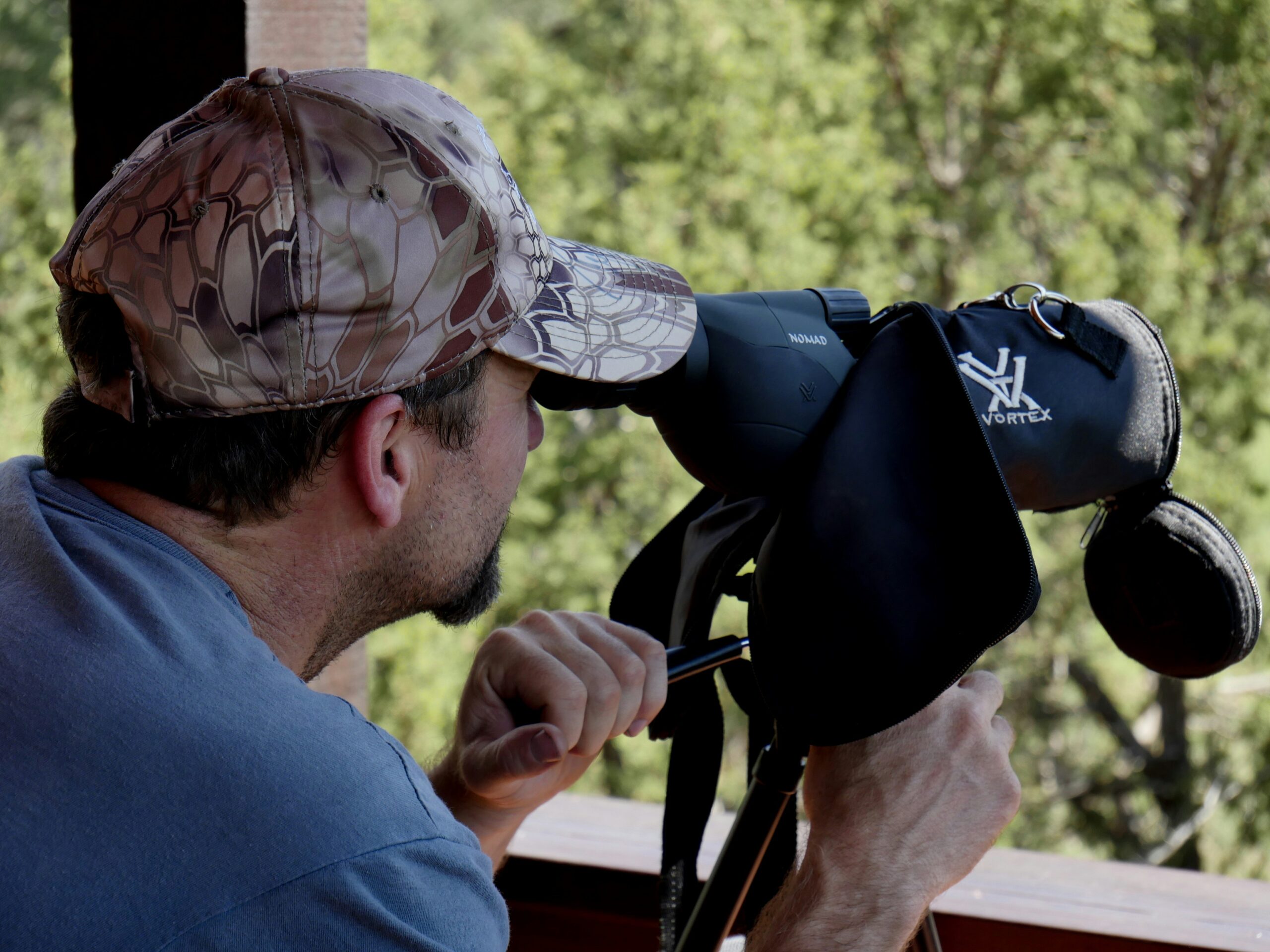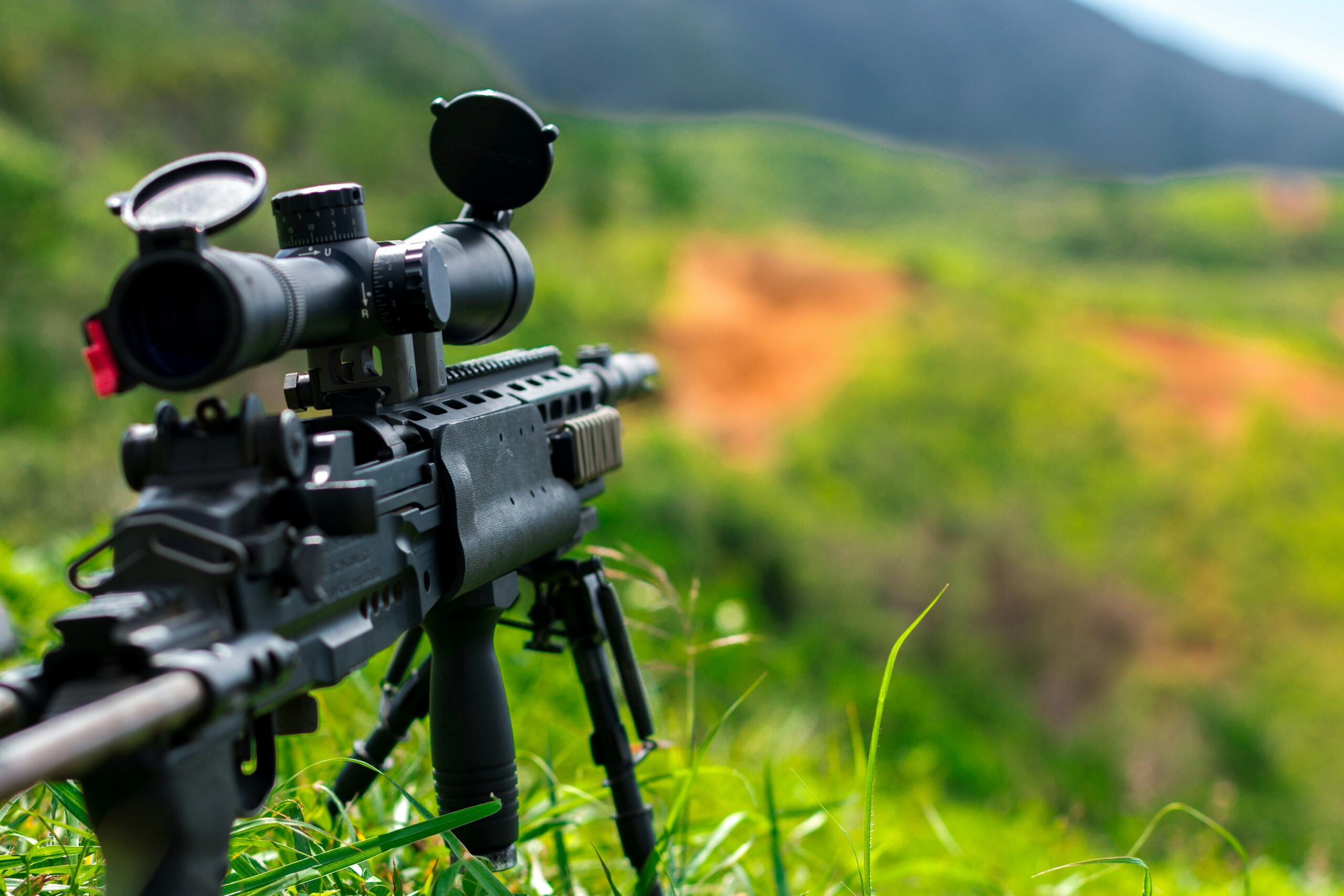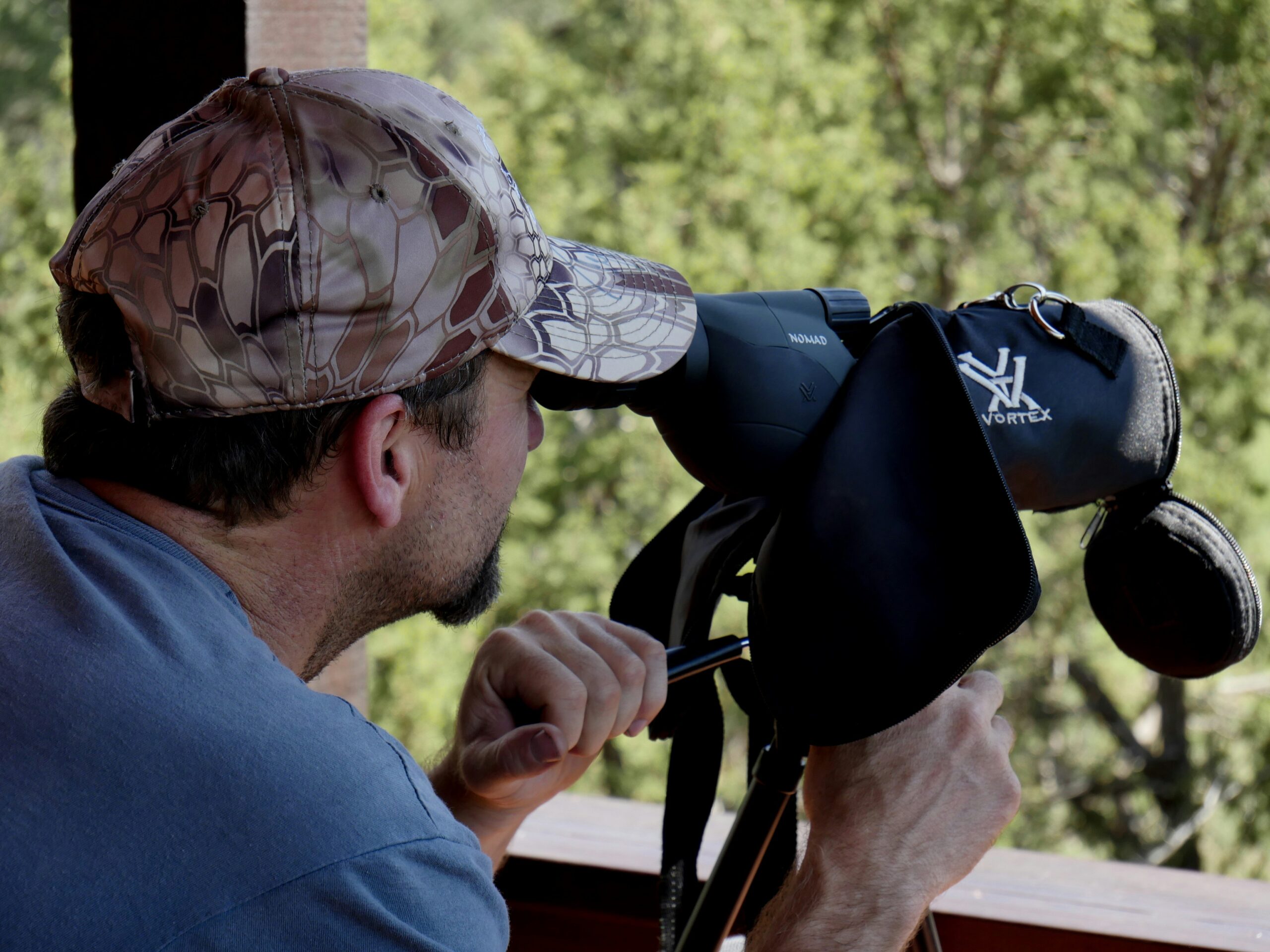Are you an avid shooter looking to improve your accuracy? If so, you’ve probably wondered what the best technique is for adjusting windage and elevation on a scope. Whether you’re a novice or an experienced marksman, making precise adjustments to your scope can greatly enhance your shooting performance. In this article, we will explore various techniques that can help you master the art of adjusting windage and elevation on a scope. So, grab your scope and let’s dive into the world of precision shooting!

Understanding Windage and Elevation Adjustments
Defining Windage and Elevation Adjustments
When it comes to shooting accurately with a gun scope, understanding windage and elevation adjustments is crucial. Windage refers to the horizontal adjustment needed to compensate for the effect of the wind on the bullet’s trajectory, while elevation refers to the vertical adjustment needed to account for the bullet drop over distance. These adjustments allow you to fine-tune your aim and ensure that your shots hit the target with precision.
Importance of Windage and Elevation Adjustments in Shooting
Windage and elevation adjustments play a vital role in shooting because they allow you to compensate for various factors that can affect the trajectory of your bullet. By accurately adjusting for windage and elevation, you can overcome the influence of wind, gravity, and other environmental conditions to consistently hit your target. These adjustments make shooting at different distances and in varying weather conditions possible, making them essential for both recreational shooters and professionals alike.
The Basics of A Gun Scope
Key Components of A Scope
To understand scope adjustments, it’s essential to grasp the key components of a gun scope. A typical scope consists of a housing, an eyepiece, a main tube, reticles, and adjustment knobs. The housing provides protection and houses the internal components, while the eyepiece allows you to focus the scope. The main tube houses the lenses, reticles, and other mechanisms. The reticles, also known as crosshairs, help you aim, and the adjustment knobs allow you to make precise windage and elevation adjustments.
Functions of A Scope
The primary function of a gun scope is to enhance your vision and provide a magnified view of the target. This magnification enables accurate aiming and improves your chances of hitting the desired mark. Additionally, a scope allows for better target identification, especially at longer distances, giving you a clearer picture of what you are aiming at. With a scope, you can also compensate for bullet drop and wind drift by utilizing the windage and elevation adjustment knobs.
Understanding Scope Metrics
Scope metrics provide information about the scope’s capabilities and specifications. These metrics typically include the magnification power, objective lens diameter, field of view, eye relief, and exit pupil. The magnification power denotes how many times closer the target appears when viewed through the scope. The objective lens diameter determines the amount of light the scope can gather. Field of view refers to the width of the visible area through the scope, while eye relief and exit pupil relate to the comfort and brightness of the image seen through the scope.
Scope Adjustment Tools and Equipment
Tools for Windage Adjustment
To make windage adjustments on your scope, you will need specific tools. The most common tool for windage adjustment is the windage adjustment knob itself, located on the scope’s main tube. This knob allows you to move the reticles left or right in small increments, compensating for the wind’s effect on your bullet’s trajectory. Additionally, a torque wrench or screwdriver may be necessary to ensure proper adjustments without damaging the scope.
Tools for Elevation Adjustment
Similar to windage adjustment, elevation adjustment requires specific tools. The elevation adjustment knob, located on the top or side of the scope, allows you to adjust the vertical position of the reticles. This adjustment compensates for bullet drop over distance, ensuring your shots hit the desired target. In some cases, shims or adjustable mounts may be necessary to fine-tune the elevation adjustment if the scope lacks sufficient range.
Importance of Proper Maintenance of Adjustment Tools
Maintaining your adjustment tools is essential to ensure their accurate and reliable performance. Regular cleaning and lubrication help prevent rust and wear, allowing for smooth adjustments when needed. Storing the tools in a clean and dry place also extends their lifespan. Additionally, it is crucial to handle the adjustment tools with care, avoiding any excessive force that may cause internal damage to the scope. By properly maintaining your adjustment tools, you can rely on them to make precise and consistent windage and elevation adjustments.
Preliminary Scope Alignment
Importance of Scope Alignment Before Adjustments
Before making any windage and elevation adjustments, ensuring proper scope alignment is essential. Scope alignment refers to aligning the scope’s reticle with the barrel of the firearm. A misaligned scope can lead to inaccurate shots, making adjusting windage and elevation pointless. By aligning the reticle correctly, you lay the foundation for accurate adjustments that will translate to precise shots on target.
Techniques for Aligning your Scope
Several techniques can be used to align your scope correctly. One widely used method is bore sighting, which involves visually aligning the scope’s reticle with a target placed a short distance away. Another technique includes using a laser bore sighter, which emits a laser beam parallel to the barrel’s bore. Whichever method you choose, it is crucial to ensure that the reticle aligns with the barrel by adjusting the scope’s position and tightening the mounting screws until secure. Aligning your scope before adjustments ensures that your windage and elevation changes correspond accurately to the bullet’s impact on the target.

Adjusting Windage on A Scope
Understanding Windage Adjustment Knobs
Windage adjustment knobs are located on the side of the scope’s main tube and control the horizontal movement of the reticles. These knobs are usually labeled with directional indicators, such as “L” for left and “R” for right, indicating the direction the reticles will move when adjusted. Each click of the windage adjustment knob typically corresponds to a specific angular minute of adjustment, allowing for precise windage changes.
How to Tweak Windage Adjustments
To adjust windage, start by accurately determining the direction and intensity of the wind. Once you have this information, turn the windage adjustment knob in the desired direction. Each click of the knob will move the reticles a minute amount horizontally. For example, if you need to compensate for a leftward wind, turn the knob in the “L” direction. Make sure to count the clicks and keep track of the adjustments you are making. Tweak the windage adjustments incrementally, testing each adjustment for accuracy.
Common Mistakes While Adjusting Windage
One common mistake when adjusting windage is overcompensating for the wind’s effect. It is essential to make small, incremental adjustments and test each adjustment on the shooting range. Additionally, forgetting to reset the windage adjustment knob after sighting can lead to confusion and inaccurate adjustments. Always ensure that the knob is set to its zero position before making any windage changes. Lastly, rushing the windage adjustment process can result in errors. Take your time and make deliberate adjustments to achieve the desired accuracy.
Adjusting Elevation on A Scope
Understanding Elevation Adjustment Knobs
Elevation adjustment knobs are located at the top or side of the scope’s main tube and control the vertical movement of the reticles. These knobs are often labeled with directional indicators, such as “U” for up and “D” for down, indicating the direction the reticles will move when adjusted. Each click of the elevation adjustment knob corresponds to a specific angular minute of adjustment, allowing for precise elevation changes.
How to Tweak Elevation Adjustments
To adjust elevation, start by considering the distance to your target and the bullet’s drop over that distance. Determine the appropriate adjustment needed to compensate for the drop and turn the elevation adjustment knob in the correct direction. Each click of the knob will move the reticles a minute amount vertically. For example, if you need to compensate for bullet drop, turn the knob in the “D” direction. Just like with windage adjustments, make incremental changes, testing each adjustment for accuracy.
Common Mistakes While Adjusting Elevation
One common mistake when adjusting elevation is failing to account for the bullet’s trajectory at various distances. Understanding the bullet drop over a specific range is essential for accurate elevation adjustments. Additionally, neglecting to consider the specific ammunition you are using can lead to discrepancies in elevation adjustments. Different bullet types and weights may exhibit varying drop characteristics, so it is crucial to know your ammunition and its performance. Lastly, rushing the elevation adjustment process can result in inaccurate adjustments. Take the time to make accurate and incremental changes to ensure precision.

Field Testing Your Adjustments
Preparing the Shooting Range for Testing
Once you have made windage and elevation adjustments, it is crucial to field test them to verify their effectiveness. Prepare a shooting range by setting up targets at various distances representative of your shooting scenario. Ensure that the range is clear of any obstructions or hazards, allowing for safe and accurate shooting. Take the necessary safety precautions and follow local regulations when conducting your test.
Measuring Shot Accuracy
To measure the accuracy of your shots, carefully aim at the target and fire a series of shots. With each shot, note the impact point on the target. Analyze the groupings of the shots to determine if they are centered and consistent. Ideally, the shots should be grouped close to your point of aim, indicating that your windage and elevation adjustments have been successful. If the shot groupings are consistently off target, further adjustments may be necessary.
Adjusting According to Shot Feedback
Based on the impact points of your shots, analyze the pattern and determine if any adjustments are required. If the shots consistently miss the target in one direction, further windage or elevation adjustments may be needed. Make incremental changes in the appropriate direction until the shots consistently hit the desired target. Remember to track the number of clicks you make on the adjustment knobs to ensure you can replicate the adjustments if needed in the future.
Advanced Windage and Elevation Adjustments
Windage and Elevation Adjustments for Long-Range Shooting
For long-range shooting, windage and elevation adjustments become even more critical. Factors such as bullet ballistics, wind speed and direction, and the shooter’s skill all play a role in accurately hitting targets at a distance. Understanding the ballistics of your ammunition, including its muzzle velocity and ballistic coefficient, allows for more precise windage and elevation adjustments. Additionally, advanced techniques such as using holdover or dialing adjustments based on distance can be employed to achieve consistent accuracy in long-range shooting scenarios.
Adjusting for Wind and Environmental Factors
Wind and environmental factors greatly affect the bullet’s trajectory, making it necessary to adjust windage and elevation accordingly. Monitoring wind speed, assessing wind direction, and making real-time windage adjustments are crucial for compensating for the wind’s effect on the bullet. Incorporating environmental factors such as temperature, humidity, and altitude in your scope adjustments can further refine your accuracy. By considering these factors and making appropriate adjustments, you can overcome the challenges posed by wind and environmental conditions to consistently hit your targets.
Tips and Tricks for Successful Scope Adjustment
Conducting Regular Testing and Adjustments
Regularly testing your scope adjustments ensures that they remain accurate and effective over time. Environmental factors, thermal expansion, and other variables can cause your scope to shift and require readjustment. By conducting periodic range sessions and verifying your windage and elevation settings, you can maintain a high level of accuracy and confidence in your shooting.
Understanding the Impact of Temperature and Altitude on Adjustments
Temperature and altitude can greatly influence the bullet’s trajectory, necessitating adjustments to windage and elevation. Changes in temperature affect air density and can cause the bullet to fly differently. Similarly, at higher altitudes, the thinner air can affect the bullet’s flight path. Understanding these effects and making the necessary adjustments based on temperature and altitude will ensure consistent accuracy in different shooting conditions.
Making Minor, Incremental Adjustments
When making windage and elevation adjustments, it is crucial to make small, incremental changes. Large, drastic adjustments can lead to overshooting the target or make it challenging to zero in on the desired point of impact. By making minor adjustments and verifying the impact on the target, you can fine-tune your scope to achieve the desired accuracy. Remember, patience and precision are key when adjusting your scope.
Common Issues with Scope Adjustments
Troubleshooting Windage Issues
If you consistently experience windage issues, where your shots deviate to one side of the target, several factors may be at play. Ensuring proper alignment of the reticle with the barrel is crucial to accurate windage adjustments. If alignment is not the issue, verifying the tightness of the scope’s mounting screws and rings may be necessary. Loose or improperly tightened mounts can cause the scope to shift, affecting windage adjustments. Lastly, considering the influence of crosswinds and correcting your shooting technique may help resolve windage issues.
Troubleshooting Elevation Issues
Elevation issues, where your shots consistently hit above or below the target, can be frustrating. Similar to windage, checking the alignment of the reticle with the barrel is crucial to accurate elevation adjustments. Additionally, ensuring that the scope is securely mounted, without any play or slippage, is essential for consistent elevation adjustments. Lastly, understanding bullet drop and making appropriate adjustments based on distance can help resolve elevation issues. Consider factors such as the ammunition type, muzzle velocity, and bullet trajectory to fine-tune your elevation adjustments.
Professional Help for Scope Adjustment Issues
If you are experiencing persistent scope adjustment issues or are unsure about the process, seeking professional help can be beneficial. Experienced gunsmiths or shooting instructors can provide guidance, troubleshoot any problems, and help you optimize the performance of your scope. They have the knowledge and expertise to diagnose and rectify any scope adjustment issues, ensuring that you can shoot with confidence and precision.
In conclusion, understanding windage and elevation adjustments and how to effectively tweak them is essential for accurate shooting. By comprehending the key components of a gun scope, utilizing the appropriate tools, aligning your scope properly, and conducting thorough testing, you can make precise windage and elevation adjustments. Consider the impact of environmental factors, conduct regular maintenance, and rely on professionals when needed to ensure optimal scope performance. With proper technique and attention to detail, you can confidently hit your targets and improve your shooting skills.

